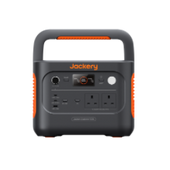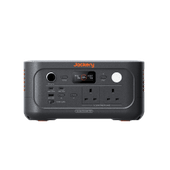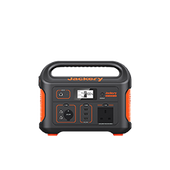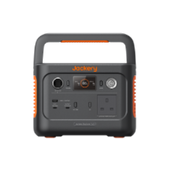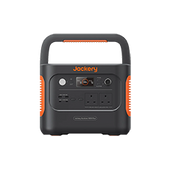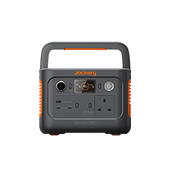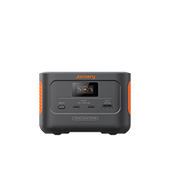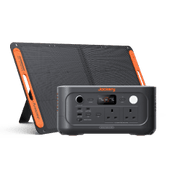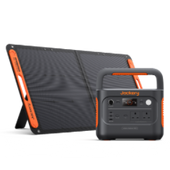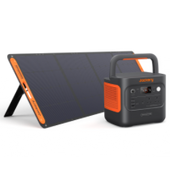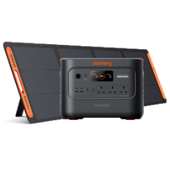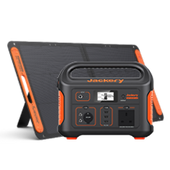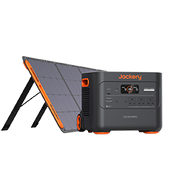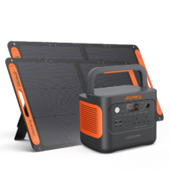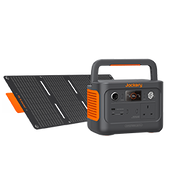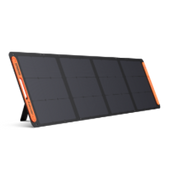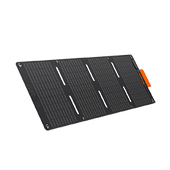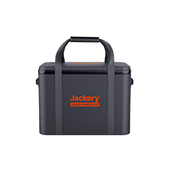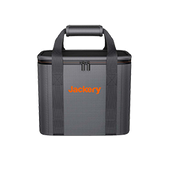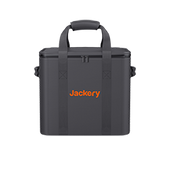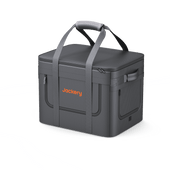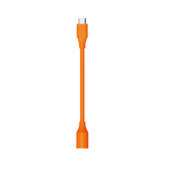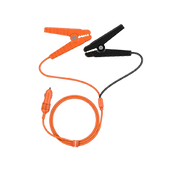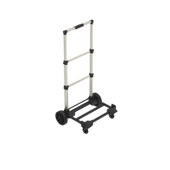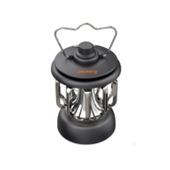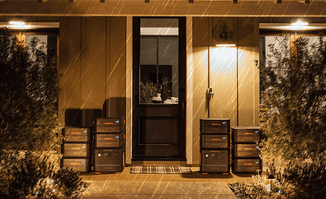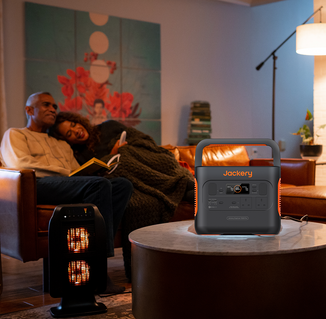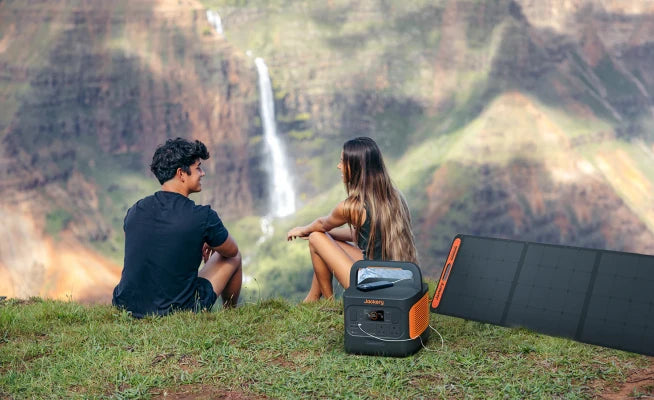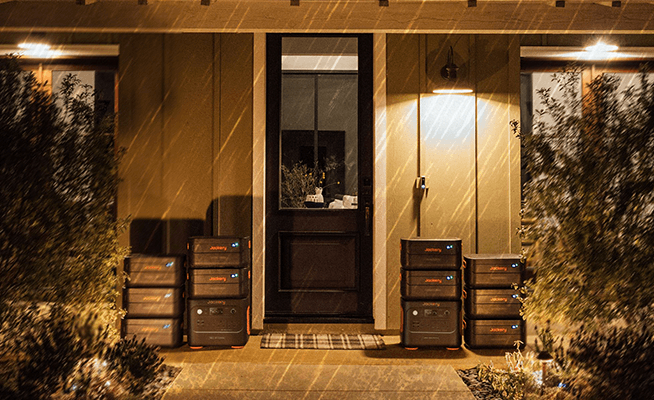Hiking is an exciting way to connect with nature, gain strength, and discover new terrain—but having the correct gear is essential for trail safety, comfort, and confidence. Women's hiking gear should meet not just performance requirements, but also fit, function, and particular demands such as layering, foot support, and feminine hygiene.
This article discusses basic hiking apparel, footwear, backpacks, packing tactics for women, and the benefits of lightweight travel. We also examine safety equipment and environmentally friendly hygiene products. Whether you're planning a day walk or a multi-day excursion, you'll discover helpful ideas and excellent suggestions to help you pack sensibly.
|
Key Takeaways: |
|
The Importance of Having the Right Hiking Gear for Women
Hiking is a physically challenging exercise that demands us to be ready for many terrains, weather conditions, and unforeseen events. Without the correct clothing, we risk injuring ourselves, causing pain, and possibly putting our lives in danger.
Quality female hiking gear not only improves our safety but also enhances our overall enjoyment of the great outdoors. Investing in gear that is appropriate for our needs allows us to focus on the beauty of nature and the excitement of the experience, rather than worrying about ill-fitting or inadequate equipment. We can start by:
Create a Packing List
Make a list of your regular hiking gear and weigh it on a kitchen scale. I suggest a lighter pack. It is free and widely used among hikers for creating and sharing packing lists. This strategy forces you to examine the weight of each item you pack, demonstrating how the little details add up.
Decide What To Leave Behind
Most individuals carry heavy packs because they have too much equipment, not because their gear is cumbersome. A minimalist attitude can go a long way without requiring the purchase of new equipment.
Bring the necessary items for your journey. Examples include carrying fewer water bottles when water sources are plentiful, choosing an inexpensive poncho over rain gear when no rain is expected, and using a lighter sleeping bag if you only backpack in the summer.
Evaluate your packing list after each trip. Ask yourself, "Do I really need this?" Consider leaving useless stuff behind the next time (with the exception of critical first aid and emergency supplies).
Upgrade Your Equipment
An excellent approach to selecting where to improve first is to examine the cost per ounce, or how much you're spending for each ounce you save.
Download the Hiking Gear for Women Checklist >>
What to Wear for Hiking?
While there are specific considerations to make when it comes to clothing for the weather and environment in which you'll be hiking, there are a few universal guidelines for dressing for hiking (and packing) that should be followed, especially for women, regardless of your destination. Whether it's a day trek or a multi-day journey, these hiking apparel guidelines apply to hikers of any gender identity:

Hiking Shirts & Tops
The majority of our heat is generated and controlled in our core; therefore, we must select our hiking shirts and tops wisely. When purchasing new hiking clothing, ensure that they are:
Moisture-wicking
Made with synthetic materials (no cotton)
Lightweight and breathable
Hiking Jackets
The season and environment in which you are hiking determine whether you should wear a thicker insulated jacket or a lighter jacket. When trekking in the mountains, it's essential to be cautious, as the weather can change suddenly.
Women's Hiking Shorts
When it comes to trekking, any old shorts will do, as long as they are comfortable. My personal preference for hiking is to wear spandex or yoga shorts, or loose shorts with an elastic waistband, since these kinds of shorts allow for the most significant amount of movement. My preference is for shorts that include pockets, as this will enable me to keep my phone or other essentials close at hand.
Women's Hiking Pants
When I plan to trek in the mountains, even during the summer, I often wear trousers rather than shorts. When I climb, I make sure to wear trousers so that I don't get cold, as the temperatures at the summit may be significantly lower than those at the trailhead. Also, trousers are preferable in situations when there are insects or when the route is overgrown.
Hiking Rain Gear
On every walk, should you carry a mackintosh with you? You should be aware that the weather in the mountains can be unpredictable, and it is essential always to be prepared for any conditions that may arise. Not only can being wet be an unpleasant experience, but it can also be hazardous.
On the other hand, this does not imply that I always carry a rain jacket with me on these excursions. I check the weather forecast for the region where I will be trekking. If there is no possibility of precipitation and I am going on a short trek, it is quite probable that I will not bring my rain jacket with me.
If I am going to be hiking at a high elevation, climbing to the top of a mountain, or if the path is exposed and above the treeline, it is always a good idea to have a rain jacket with me, just in case.
Hiking Footwear
Choosing the proper footwear for hiking is undoubtedly one of the most crucial choices that you will make when it comes to your hiking gear. A decent pair of hiking shoes that are both strong and comfortable, with high grip, is an absolute must. Additionally, it is crucial to have quality socks that may help avoid blisters.
On the trail, cotton socks are not ideal since they tend to slide about and are notorious for producing blisters. Wool, which is used in the production of many hiking socks, is known to facilitate the reduction of perspiration and to maintain a tight fit against the foot, preventing any unpleasant friction.
What Not to Wear When Hiking?
Although there is no official clothing requirement on the path, you should avoid the following things if you wish to maximise personal comfort:

Cotton (including denim): Cotton—and denim composed of cotton fibres—absorbs moisture, so it may keep you sweating in hot weather and cool you down when it becomes chilly and damp. When feasible, use alternative natural or synthetic fibres that have moisture-wicking characteristics. However, cotton may be sufficient for shorter excursions and in ideal weather conditions.
Clothes you value too much to destroy or get dirty: Dirt and perspiration are everyday on hiking routes, so if you have any gear that you don't want to get soiled or wet, leave it at home.
Improper footwear: The shoes you wear on a trip may be the most crucial choice you make for both comfort and safety, so pick strong, well-fitting shoes or hiking sandals that are up to the task. To minimise aching feet and blisters, you should avoid wearing brand-new shoes on longer walks. Instead, break them in gently on shorter routes.
Jewellery: Consider your jewellery before heading out on the path. Looser items, such as necklaces and bracelets, may be perilous if they get entangled or twisted in trees, and rings or earrings can be misplaced, quickly converting trekking bliss into sadness. When trekking, we recommend leaving anything valuable or irreplaceable at home.
Packs that are very heavy or do not fit: No hiker wants to be burdened down by an overcrowded or poorly fitted daypack or backpack. Carrying too much weight can make the walk difficult, and an ill-fitting pack can cause chafing and discomfort.
Hiking Gear for Women
Every woman has a different experience hiking, but specific gear makes the path more comfortable, safe, and fun for everyone. Having the correct hiking gear for women, from base layers to outerwear, may make a significant impact. These carefully chosen basics have been tried, tested, and approved by other hikers. They will keep you safe in bad weather, help you get over difficult paths, and keep you fresh on lengthy hikes.

Essential Clothing Items for Female Hikers
When it comes to hiking gear, selecting the right clothes is critical for our comfort, safety, and performance. The correct attire gives us a feeling of security, enabling us to concentrate on the route ahead. Every female hiker should consider the following basic clothing items:
Hiking Pants or Shorts: Opt for textiles that are breathable, quick-drying, and elastic, providing unrestricted mobility. Convertible trousers that may be transformed into shorts are a flexible choice.
Base Layers: Moisture-wicking base layers, such as synthetic or merino wool shirts and pants, help regulate body temperature and prevent chafing.
Mid-Layers: Insulating midlayers, such as fleece jackets or vests, provide warmth in colder weather or during periods of rest.
Outer Layers: Waterproof and breathable outer shells, such as rain jackets and trousers, protect from rain, wind and snow.
Hiking Socks: Invest in high-quality, moisture-wicking socks designed explicitly for trekking to prevent blisters and keep your feet dry.
Sports Bras: Supportive and moisture-wicking sports bras are essential for athletic pursuits, such as hiking, as they provide comfort and reduce bounce.
Remember that layering is essential when it comes to hiking clothing. This strategy enables you to adapt to changing weather conditions and activity levels, keeping you comfortable and safe during your walk.
Must-Have Footwear for Female Hikers
Proper footwear is unquestionably the most crucial piece of hiking gear since it directly affects our comfort, stability, and overall trail performance. Ladies may have difficulties picking the appropriate hiking boots or shoes due to the distinctive shape and size of their feet. Here are some considerations when selecting footwear for female hikers:
Hiking Boots: Look for boots with ample ankle support, durable soles, and either waterproof or water-resistant materials. Boots specifically designed for women often feature smaller heels and wider toe boxes to better accommodate the natural shape of our feet. It's crucial to have footwear that fits properly. A poorly fitted pair of footwear might cause blisters, which means no more trekking for a time. Cotswold Outdoors provides personalised boot fitting services, which I strongly recommend.
Hiking Shoes: Hiking shoes provide better flexibility and breathability than boots for shorter excursions or well-maintained routes. Look for shoes that provide enough traction, cushioning, and support.
Fit & Break-in: Ensure your hiking footwear fits snugly and allows for sufficient toe flex. Break them in gently before going on longer excursions to avoid blisters and discomfort.
Investing in high-quality, well-fitting footwear may significantly improve your hiking experience. It's a confirmation that you've made a wise investment, preventing injuries and exhaustion while giving you the confidence to conquer any path.
Choosing the Right Backpack for Your Hiking Needs
A well-designed rucksack is vital for carrying your gear, hydration, and supplies comfortably and effectively. When choosing a rucksack for hiking, consider the following factors:
Size and Capacity: Select a rucksack size that suits the length and duration of your hikes. Day walks often need lighter packs (30-40 litres, potentially more for winter trekking). In contrast, multi-day treks demand heavier packs (50+ litres).
Fit and Adjustment: Look for backpacks with adjustable torso lengths, hip belts, and shoulder straps to ensure a comfortable and tailored fit that suits your body shape and size.
Features: Ventilation systems, hydration reservoirs, hip belt compartments, and rain coverings are all available options, depending on your specific requirements.
Weight Distribution: Opt for backpacks that distribute weight evenly over your hips and shoulders, which helps reduce back and shoulder discomfort.
Remember that a correctly fitting rucksack can significantly enhance your hiking experience by effectively distributing the burden and reducing fatigue.

Safety Equipment for Hiking
When enjoying the great outdoors, safety should always be your top priority. Here are some essential safety items and accessories to consider.
Emergency blankets or bivy sacks are lightweight, compact items that can provide warmth and shelter in the event of an emergency or an unexpected overnight stay.
A whistle and signal mirror may assist in drawing attention and aid in rescue operations if you get lost or wounded.
As a solitary female hiker, I usually take my satellite device so I can check in at home when I leave and when I return. You may need to contact for assistance, yet you cannot always count on a phone reception.
In an emergency, having a dependable fire starter and waterproof matches may be very useful for providing warmth, signalling, and purifying water.
Trekking poles may help you gain stability, lessen stress on your knees, and give extra support on rugged terrain.
Carry sunscreen, lip balm, sunglasses, and a wide-brimmed hat to shield yourself from dangerous UV rays. Depending on your hiking destination, insect repellent may help keep troublesome bugs at away and avoid insect-borne diseases.
Hygiene Products for Female Hiking
When spending time in the great outdoors, using the correct feminine hygiene products may make your trip more pleasant, sanitary, and environmentally responsible. Here are a few of the top choices:
Kula Cloth - Pee Cloth: "A Game-Changer for Every Female Hiker" presents the Kula Cloth, a highly absorbent, antibacterial fabric explicitly designed for use with urine. It highlights the importance of sanitation and hygiene for female hikers and demonstrates how the Kula Cloth meets these needs. The article also goes into the cloth's characteristics and advantages, making it an excellent complement to any female hiker's kit. See Blog Review Here.
Period Pants: Unlike disposable goods, remove the need to transport and dispose of used tampons or pads, which is particularly significant when adhering to the Leave No Trace principles. Period trousers are intended to be waterproof, breathable and moisture-wicking. They keep you dry and comfortable even on lengthy excursions, with no chafing, shifting, or the need to change regularly.
High-absorbency alternatives may last for many hours, eliminating the need for frequent changes—ideal when you're miles from the next lavatory. Reusable period pants help decrease waste, making them a more sustainable option than single-use goods.
There is no need to bring additional pads, tampons, or even a menstrual cup; instead, consider getting a couple of pairs of period pants and rinsing them as needed, making packing easier and lighter.
Intimate Wipes: Freshen up with unscented, biodegradable intimate wipes. Ideal for cleaning reusable items or keeping them fresh throughout lengthy excursions.
PH-Balanced Wash or Spray: A mild pH-balanced cleanser that promotes cleanliness without upsetting the natural equilibrium. Choose travel-sized, environmentally responsible solutions.
Electric Gear for Hiking
It's essential to stay connected and charged when hiking, especially on long or remote journeys, for safety, navigation, and capturing photos. Here are some crucial electrical things to bring with you:
Jackery Explorer 500 v2 Power Station: The Jackery Explorer 500 v2 is designed as a highly portable and safe power solution, making it particularly suitable for women who prioritise ease of transport, low-noise operation, and reliability on the trail or at the campsite.
A flashlight or headlamp that can be charged is essential for walks that start early in the morning, end late at night, or last all night. Select versions that are lightweight, water-resistant, and feature adjustable brightness are ideal.
Rechargeable Hand Warmers: These are ideal for treks in cold weather and can also serve as power banks. They make frigid mornings a lot easier to deal with.
(Optional) Solar Panel Charger: If you're trekking in sunny places and want a backup that won't run out of power, consider packing solar panels like the Jackery SolarSaga, which can charge your gear over time.

Jackery Portable Power Station for Hiking
Jackery Portable Power Stations are a popular choice for hikers, offering several benefits that are particularly appealing to women, including safety, portability, and ease of use. For solo or group hiking, having a charged phone is critical for navigation, communication, and emergencies. Jackery provides reliable power to charge essential devices (phones, GPS, headlamps) multiple times, which is a significant safety factor.
Jackery units are equipped with a Battery Management System (BMS) that features short-circuit protection, overcharge protection, and temperature control. This provides reassurance that the device is safe to use and won't damage connected electronics.
Unlike traditional, noisy, and fume-producing gasoline generators, Jackery Portable Power Stations operate silently. This allows you to enjoy the tranquillity of nature and is a less intrusive option when sharing a campsite.
Jackery Explorer 500 v2
The Jackery Explorer 500 v2 is designed as a highly portable and safe power solution, making it particularly suitable for women who prioritise ease of transport, low-noise operation, and reliability on the trail or at the campsite.

Ultra-Lightweight Design: The unit weighs only 5.7kg (12.57 lbs). For reference, this is lighter than many standard hiking backpacks and significantly lighter than older power station models with similar capacity. This makes it manageable for women to carry from a car to a campsite, use in a tent, or move around a base camp without significant strain.
Compact and Slim Form Factor: The dimensions (31.1 × 20.5 × 15.7 cm) are notably 27% smaller than comparable 500Wh power stations. Its compact, slim design is easy to fit in car trunks, storage boxes, or tight spaces inside a tent or vehicle, avoiding clutter. The built-in handle is designed for a comfortable, one-handed carry, simplifying the process of unloading and setting up camp.
Ample Capacity for Multi-Day Trips: The 512Wh battery is ideal for weekend camping or hiking trips, providing enough energy to:
Recharge a standard smartphone over 40 times.
Charge a laptop multiple times (e.g., 4-5 charges).
Run a small, energy-efficient mini-fridge/cooler for approximately 4.5 hours.
Power essential health devices like a 30W CPAP machine for 13-42 hours (depending on settings).
LiFePO₄ Battery Chemistry: The use of Lithium Iron Phosphate (LFP) cells is a significant upgrade. It is rated for 6,000 charge cycles to 70% capacity, meaning it could last for decades of typical use. It features a 12-layer Battery Management System (BMS) that protects against over-voltage, over-current, short circuits, and extreme temperatures, providing confidence that your gear and the power station are safe.
Whisper-Quiet Operation: The noise level is kept under 28 dB, making it an ideal silent power source. This is a significant benefit for enjoying the natural sounds of the outdoors without the irritating hum of a loud device, making it perfect for reading or relaxing at the end of the day.
|
Features of Explorer 500 v2 |
|
|
Lightweight & Compact |
Weighs only 5.7 kg (about 12.57 lbs) and has a smaller, ultra-slim form factor (31.1 × 20.5 × 15.7 cm). |
|
Sufficient Capacity & Output |
512Wh capacity and 500W continuous output (with 1000W peak). |
|
Multiple Output Ports |
Includes 2 AC outlets, 2 USB-C ports (up to 100W and 30W, 1 USB-A port 18W, and a 12V car socket. |
|
Enhanced Safety Features |
Features a LiFePO₄ battery (offering greater stability), a 12-layer Battery Management System (BMS), surge protection (up to 3000V), and a fire-resistant housing (UL 94-V-0 standard). |
How to Care for and Maintain the Hiking Gear?
Once you've found the women's hiking clothes and outdoor gear that meet your wants and specifications, you'll want to take good care of them so that they retain their quality for as long as possible. These suggestions apply to the finest hiking shorts, hiking backpacks, women's hiking trousers, shoes, and any other equipment you're using to recreate. Here are some of our top tips:
Tip 1: Whether your hiking gear is composed of synthetic or natural fibres, wash it on a gentle cycle at a low temperature and tighten any buckles, zippers, or fixings before washing. If you must tumble dry, do so on a low setting. If you can air-dry your hiking gear, lay it flat and keep it away from direct sunlight.
Tip 2: To keep your garments working properly, waterproof them regularly using Nikwax or other re-impregnating solutions—store garments in a calm, dry environment where moths and other fabric-eating insects cannot access them.
Tip 3: Clean any leather on boots and shoes using a moist, warm towel.
Tip 4: If you tear a hole in your jacket or trousers, use a patch to mend it.
Whether you're hiking in the dead of winter, the searing heat of summer, or anywhere in between, remember to pick your textiles wisely, layer correctly, and care for your gear after your trek. Best wishes!
Where to Buy Female Hiking Gear?
With the growing popularity of outdoor sports, several merchants and companies now offer high-quality hiking gear specifically designed for women. Here are some choices to consider:
Outdoor Speciality Stores: For a diverse assortment of hiking gear created exclusively for ladies, visit Cotswold Outdoor, Blacks or Go Outdoors, both locally and online.
Brand Websites: Many well-known outdoor companies, like Berghaus, Osprey, Fjallraven, Icebreaker, and ACAI, sell women's hiking gear on their websites.
Online Retailers: Online retailers include companies such as Amazon.
Secondhand or Consignment Stores: Consider shopping at secondhand or consignment shops for gently used hiking gear at a low price.
Outdoor Gear Swaps and Exchanges: Attend local outdoor gear swaps or exchanges to discover gently used gear from other hikers and outdoor lovers—for example, Vinted, eBay, and Facebook Marketplace.
When shopping for hiking gear, don't be afraid to try on items, ask for advice, and read product reviews to ensure you're making an informed decision that suits your individual needs and preferences.
FAQs
The following are the frequently asked questions about hiking gear for women:
1. What not to wear while hiking?
Cotton quickly absorbs and holds water, leaving the hiker wet, which is harmful in both cold and hot conditions. Wearing cotton socks is an easy way to get blisters on the trail. Wool - Some may recall with dread the days of wearing an itchy wool jumper.
2. How to dress for hiking in the UK?
A comfortable wicking base layer is necessary, but you should bring a second layer in case the weather changes (as it often does in Spring). Pack a soft shell to guard against the wind, as well as a waterproof hard-shell jacket that you can easily carry and grab in case it rains.
3. Do I need to wear a bra while hiking?
It is personal to have support requirements. When it comes to hiking, some hikers with smaller busts may opt for a light and minimalist approach, while others with larger chests may choose to go for medium support, even on days with minimal impact.
4. Should I wear leggings for hiking?
When it comes to day treks that are not too difficult, leggings are often the ideal option. However, when it comes to more challenging walks or multi-day trips, trousers with a more rugged design may be required.
5. Why do you not wear jeans when hiking?
As a result of their lack of breathability and moisture-wicking capabilities, as well as their somewhat higher weight compared to hiking trousers, they are not particularly suitable for backpacking. When jeans are wet, they tend to absorb moisture, which causes them to smell unpleasant after a few miles of trekking. Due to this, we do not recommend wearing jeans for extended walks.
Final Thoughts
When selecting the best hiking gear for women, comfort is essential, but so are safety, being prepared, and enjoying a good time outdoors. Putting comfort first with lightweight, moisture-wicking garments, well-fitting shoes, and the right accessories can make your time on the trail much better.
If you pack well and have reliable gear, you'll be ready for any kind of terrain or weather. Don't forget to check your gear often, make adjustments to your equipment for each walk, and opt for items that can serve multiple purposes. No matter whether you prefer ultralight gear or a lot of gear, keeping your gear in good shape and personalising it will ensure your excursions are memorable for the right reasons.

